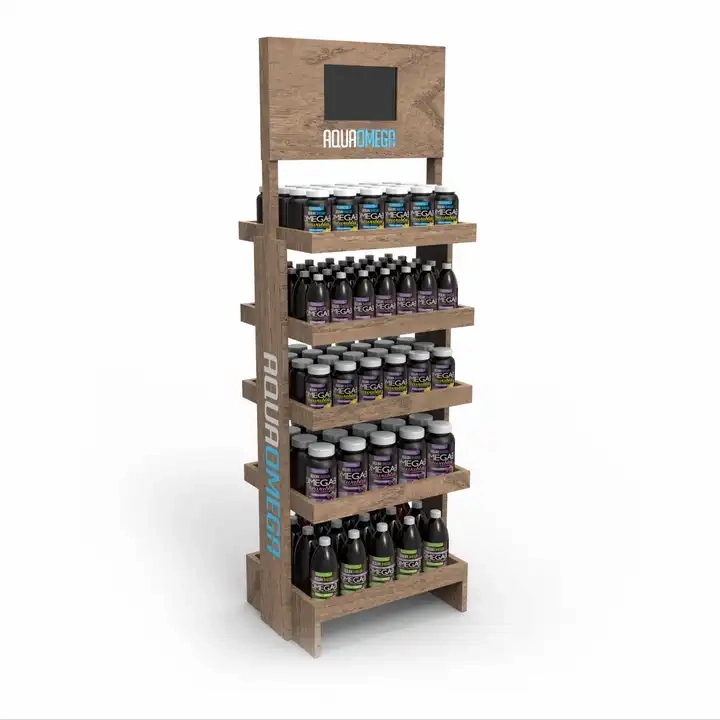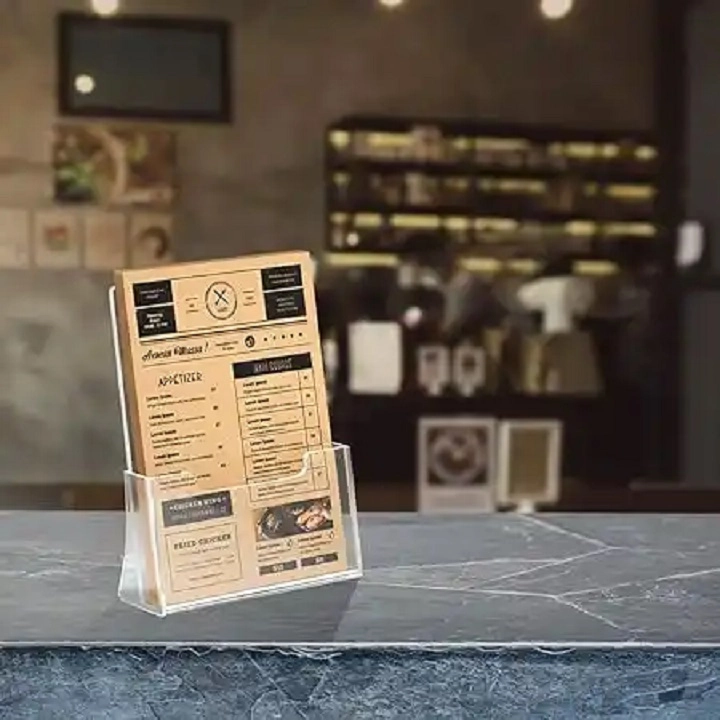Content Menu
● Understanding the Power of Display Stands
>> The Role of Display Stands in Modern Marketing
>> Advantages of Using Customized Display Stands
● Key Elements of High-Impact Display Stand Design
>> Visual Appeal
>> Structural Integrity
>> Functionality
>> Versatility
>> Space Optimization
● Steps to Customize Your Display Stands
>> Step 1: Define Your Objectives
>> Step 2: Identify Your Target Audience
>> Step 3: Conceptualize the Design
>> Step 4: Choose the Best Materials
>> Step 5: Decide on Printing and Finishing Techniques
>> Step 6: Prototype the Stand
>> Step 7: Refine Based on Feedback
>> Step 8: Production and Logistics
● Material Choices and Printing Techniques in Detail
● Creative Customization Ideas for Different Industries
>> Retail Stores
>> Exhibitions and Trade Shows
>> Books, Notebooks, and Stationery Displays
>> Playing Cards, Flash Cards, and Educational Products
>> Stickers, Labels, and Small Items
● Practical Tips for Maximizing Display Stand Effectiveness
● Conclusion
● FAQs
>> 1. What materials are best suited for different types of display stands?
>> 2. How long does it take to design and produce customized display stands?
>> 3. What are the benefits of modular display stands?
>> 4. Can display stands incorporate digital elements?
>> 5. How should I choose the right display stand style for my brand?
Display stands are essential marketing tools that can dramatically boost product visibility, brand recognition, and sales performance. In today's competitive business landscape, standing out at exhibitions, trade fairs, stores, and promotional events hinges on creating customized display stands that capture attention and communicate your brand's message clearly. Whether you are a retailer, wholesaler, brand owner, or OEM partner, understanding the customization process—from design to production—will help you maximize the impact of your display stands and elevate your brand presence.

Understanding the Power of Display Stands
The Role of Display Stands in Modern Marketing
Display stands do more than just hold products—they narrate the story of your brand and invite customers to interact with your products. From catching the eye of passersby in retail environments to creating immersive experiences at trade shows, the right display stand sets your brand apart and stimulates consumer interest.
Advantages of Using Customized Display Stands
Customized display stands offer numerous benefits:
- Enhance product visibility and accessibility by creating focal points.
- Communicate branding and product information effectively through visuals and design.
- Influence purchasing behavior with strategic positioning and engaging setups.
- Foster a professional image that builds consumer trust and reflects quality.
- Maximize retail or exhibition space usage efficiently, adapting to different environments.
Key Elements of High-Impact Display Stand Design
Visual Appeal
The visual impact of your display stands is the first impression customers receive. Using vibrant colors that align with your brand palette, clear and high-resolution graphics, and bold fonts ensures your message is seen and absorbed quickly. Effective use of contrast, shapes, and textures can draw the eye and maintain interest.
Structural Integrity
A display stand must be both visually appealing and physically reliable. The structural integrity depends on using quality materials and precise manufacturing. This ensures the stand can safely support the weight of products without deforming or collapsing, providing a consistent presentation.
Functionality
Good design balances aesthetics and practicality. Features such as adjustable shelves, compartments, hooks, or drawers accommodate different product types and sizes, simplifying customer browsing and encouraging engagement. Easy assembly and disassembly also improve convenience for event use or store rearrangements.
Versatility
Designing modular or multi-purpose stands offers flexibility. They can be reconfigured or resized to fit differing spaces and campaigns, which makes them cost-effective for brands needing adaptability across markets or product lines.
Space Optimization
Maximizing retail floor or countertop space without overcrowding improves shopper experience. A well-planned layout guides customers naturally through product displays and allows them to interact without obstruction.
Steps to Customize Your Display Stands
Step 1: Define Your Objectives
Start by clearly defining the goals for your display stands. Are you launching a new product line? Increasing brand awareness? Driving impulse purchases? Clear objectives shape the design and messaging.
Step 2: Identify Your Target Audience
A thorough understanding of your target customers—their style preferences, buying habits, and expectations—helps tailor your display stand to appeal directly to them. Age, gender, lifestyle, and culture influence design choices.
Step 3: Conceptualize the Design
Collaborate with designers or utilize industry-leading software to create digital mockups. Experiment with different configurations, color schemes, branding placements, and lighting concepts. Incorporate unique shapes or interactive elements that resonate with your audience.
Step 4: Choose the Best Materials
Your material selection influences durability, cost, and appearance:
- Cardboard is excellent for eco-friendly, affordable, or short-term displays.
- Plastic options offer waterproof and flexible designs.
- Acrylic provides a premium, transparent look for luxury items.
- Metal suits heavy-duty or industrial display needs.
- Wood and MDF deliver a natural, high-end aesthetic.
Consider environmental factors such as indoor or outdoor use to select weather-resistant materials.

Step 5: Decide on Printing and Finishing Techniques
Modern printing technologies allow for vivid, accurate branding. Techniques include:
- Digital and offset printing for detailed graphics.
- UV printing for durability and brightness.
- Embossing to add texture and emphasis.
- Foil stamping for a metallic shine and elegance.
- Spot varnish and lamination to protect the surfaces and add gloss or matte effects.
Step 6: Prototype the Stand
Creating a physical or 3D-printed prototype helps to assess design feasibility, assembly, and customer interaction before large-scale production. It allows adjustments to structure, stability, or visual details.
Step 7: Refine Based on Feedback
Collect feedback from brand managers, sales teams, or focus groups. Make necessary refinements in graphic design, structural features, or materials to optimize performance.
Step 8: Production and Logistics
Once finalized, coordinate the manufacturing process, ensuring strict quality control at each stage. Efficient packaging and flat-packing systems facilitate transportation, reduce damage risk, and simplify on-site assembly.
Material Choices and Printing Techniques in Detail
Choosing the right material is pivotal to balancing cost, durability, and visual effect. For instance:
- Cardboard display stands are popular for their recyclability and ease of customization, perfect for short campaigns or seasonal products.
- Plastic stands offer resilience to moisture and impact, suitable for cosmetics and electronics.
- Acrylic provides clarity and elegance, making it ideal for showcasing premium brands or delicate products like jewelry.
- Metal frames deliver maximum durability and support, often used in outdoor or high-traffic locations.
- Wood or MDF offers a sturdy yet sophisticated look for bookstores or artisan goods.
Printing methods have evolved to meet demanding quality requirements:
- Digital printing supports low volume, rapid turnaround with rich colors.
- Offset printing suits large batches with precise color registration.
- *Special finishes* like foil stamping and embossing enhance brand prestige and tactile interaction.
The combination of material and printing method should align with your product positioning and budget constraints.
Creative Customization Ideas for Different Industries
To truly maximize impact, tailor display stands according to industry specifics:
Retail Stores
In retail settings, tiered shelving and colorful branded signage attract attention. Modular systems allow quick updates to accommodate promotions or seasonal trends. Interactive elements like QR codes link customers to online content, coupons, or product reviews.
Exhibitions and Trade Shows
Trade show stands demand portability and flexibility. Lightweight, foldable display stands equipped with LED lighting and digital screens enable engaging brand storytelling. Custom-shaped stands or multi-panel displays create immersive brand experiences that leave lasting impressions.
Books, Notebooks, and Stationery Displays
For stationery, customized compartments accommodate varied sizes and product types. Transparent pockets or slots can showcase samples that customers can easily browse, encouraging tactile interaction.
Playing Cards, Flash Cards, and Educational Products
Playful designs and bright colors stimulate interest in educational products. Security features in display stands prevent product theft while maintaining accessibility.
Stickers, Labels, and Small Items
Rotating stands or hanging display racks help organize numerous small SKUs in limited space. Clear bins and hooks showcase products visibly while maximizing browsing convenience.
Practical Tips for Maximizing Display Stand Effectiveness
- Optimal Placement: Position stands near store entrances, checkouts, or high-traffic paths for maximum exposure.
- Effective Lighting: Use focused LED or ambient lighting to make products pop and attract the eye.
- Regular Refresh: Update graphics, stock, or design elements periodically to maintain customer interest.
- Interactive Engagement: Integrate multimedia elements like touch screens or augmented reality to deepen interaction.
- Simplicity and Clarity: Avoid clutter—use concise messaging and clean layouts to communicate your value proposition immediately.
Businesses that apply these strategies often see improved customer engagement, extended brand recall, and increased sales conversion rates.
Conclusion
Customizing display stands for maximum impact requires a deep understanding of design principles, target audiences, production materials, and marketing objectives. From the initial concept to the final assembled product, every detail matters in developing a display stand that not only holds products but tells a compelling brand story. By investing time in thoughtful customization, leveraging innovative materials and finishes, and aligning your display stand design with your brand strategy, you position your products for success in competitive retail and event environments. This approach enhances customer engagement, builds brand loyalty, and ultimately drives sales growth.

FAQs
1. What materials are best suited for different types of display stands?
Cardboard suits eco-friendly and short-term applications, plastic is durable and moisture-resistant for high-use environments, acrylic offers a premium transparent look, metal provides heavy-duty support, and wood or MDF adds a natural, upscale feel depending on your product and budget needs.
2. How long does it take to design and produce customized display stands?
Typically, design and prototyping take around 2–3 weeks, while production and shipping may require an additional 3–4 weeks. Timelines vary based on complexity, order quantity, and materials chosen.
3. What are the benefits of modular display stands?
Modular stands are easily transportable, can be reassembled in different configurations, and adapt to various products or spaces. This flexibility reduces long-term costs and supports diverse marketing campaigns.
4. Can display stands incorporate digital elements?
Yes, integrating digital screens, QR codes, LEDs, or augmented reality features can create interactive customer experiences, boost engagement, and provide useful analytics for marketing evaluation.
5. How should I choose the right display stand style for my brand?
Consider your product type, target market demographics, brand personality, and retail environment. Collaborate with experienced designers to develop stands that visually and functionally support your brand message and marketing goals.































